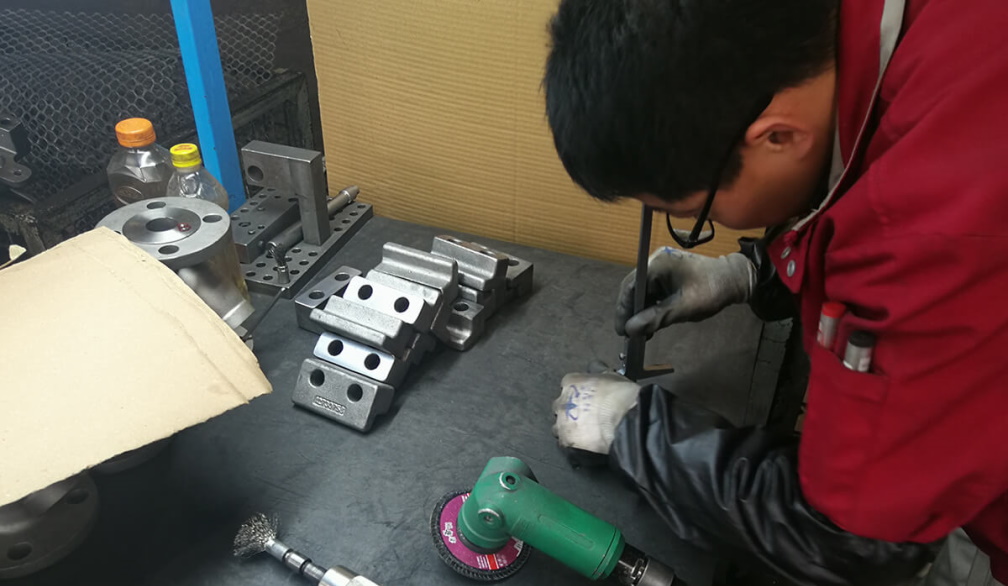10 Types of Casting Defects and Causes
- Written by NewsServices.com

Casting defects are unwanted results of the casting process. Casting cannot produce a perfect object every time. There are many reasons for this, but most of them come down to one thing—the mold is only as good as its designer, which in turn means that any defects in the resulting cast piece can be traced back to something with the original CAD model. The biggest defect culprit in our industry is shrinkage. Shrink marks are formed when solidifying metal contracts, which creates a force that tears through the mold cavity wall. Once this occurs, it can spread throughout the part, causing crackling and distortion. So, the DAWANGCASTING is a big leading steel casting industry. They have mentioned some informative points on it.
Types of casting defects and causes
1) Shrink Marks
Shrink marks are the main culprit for distortion and cracking in mold castings. These can come from a variety of sources, such as hot tears, cold shuts and gas porosity—all which occur because of shrinkage. This happens when the metal contracts and leaves stress and strain on the mold cavity wall.
2) Dirt Erosion
This occurs when sand is trapped in the mold cavity and displaced during the pouring process, causing cavities to be incompletely filled.
3) Gas Porosity
Metal is porous when air gets trapped inside while it's freezing (gas porosity). This type of porosity can leave holes or weak areas in metal.
4) Blowholes (Voids)
Blowholes are the direct result of gas porosity, where air gets trapped inside while it's freezing (gas porosity). This type of porosity can leave holes or weak areas in metal.
5) Hot Tears
Hot tears occur when the metal has not cooled enough, and the tear is actually the metal tearing itself apart. The heat required for this to occur can come from a variety of sources, but usually it's because the metal was poured too hot or cooled too rapidly (quenched).
6) Cold Shut
Cold shuts are created when two separate flows join together at low temperature, causing a very narrow 'cold' zone. This is not normally seen on thinner sections, but on thicker sectioned castings it becomes easily visible.
7) Chills
Chills are caused by the metal solidifying before it can completely fill the cavity of the mold—this will leave behind an incompletely filled area that's usually characterized by a rough surface as well as shrinkage.
8) Gas Erosion
Gas erosion occurs when gas gets trapped inside the metal and leaves behind a bubble or void. This happens most frequently with aluminum, but can also happen with magnesium and zinc alloys.
9) Slag Inclusions
Slag precipitates out of molten metal and forms solid inclusions. If it's not melted down and pushed out, it will remain inside the metal and create a defect such as porosity or hot tears.
10) Laminations
Laminations occur when two separate flows merge together at high temperature. This is seen as dark bands between sections of lighter color, and can be an indication of the alloy being used.
Mold-Filling Problems
Mold filling problems can be directly attributed to high draft, short shot or air traps that lead to incomplete fill of the mold cavity.
1) Short Shot
Short shots are caused by either insufficient metal volume in the crucible (due to too little metal, too large a pouring gate or a faulty refractory lining), too rapid a pour rate, or timing issues with the shot sleeve.
2) Incomplete Fill
Incomplete fill happens when there's either insufficient metal in the crucible (due to too little metal, too large a pouring gate or a faulty refractory lining) or when there's too much metal in the crucible.
3) Poor Gate Location
Excessively close gates lead to poor filling of mold cavity, since it can promote turbulence in the flow front. Excessive turbulence causes flashing and incomplete fill when two separate flows join together at high temperature. This is seen as dark bands between sections of lighter color, and can be an indication of the alloy being used.
4) Air Traps
Air traps can manifest as porosity, hot tears or blowholes. They're caused by turbulence in the flow front that leads to gas entrapment and improper metal solidification.
5) Cold Laps
Incomplete fills on thin sections are often characterized by tapered sides and a rough surface, caused by insufficient metal—or what's called a cold lap.
Conclusion:
Even though all defects are not discussed here, it is evident that casting defects can arise due to various causes. These causes depend on the type of metal being casted but also on other factors such as temperature, pouring rates and molding practices. casting defects have a major effect on the mechanical properties of fabricated parts, therefore having an effect on the final product's quality. It is therefore important that these defects are detected and eliminated before final products are manufactured. Read more about the defects and causes of style casting.


































